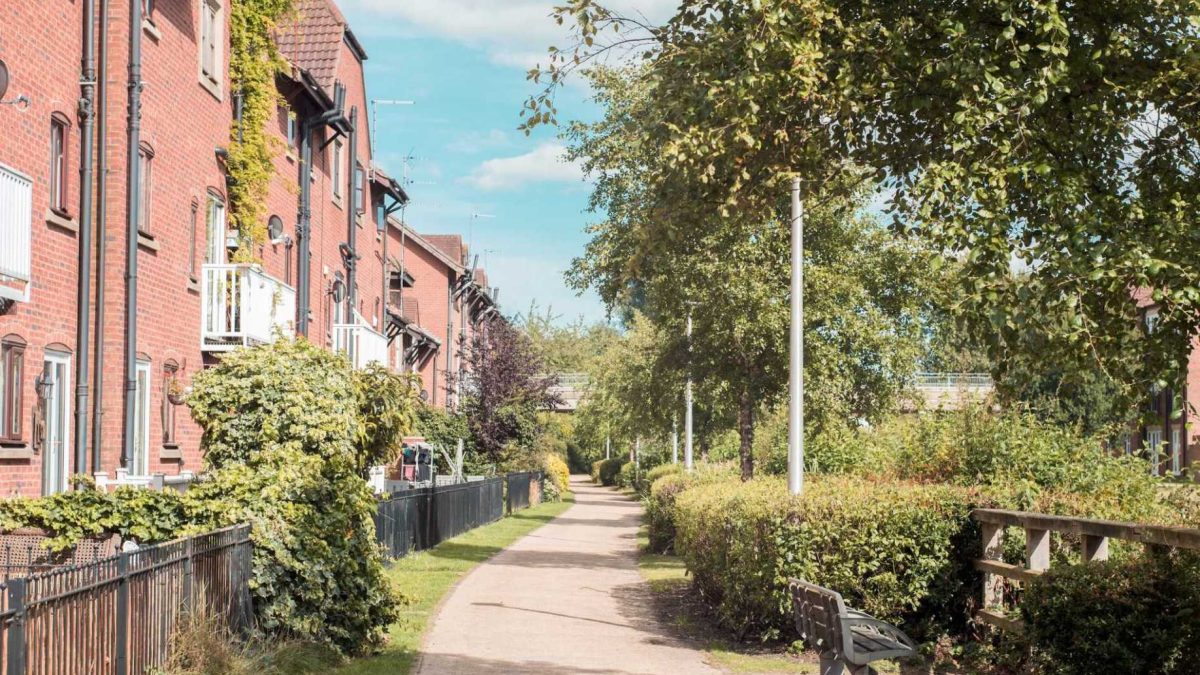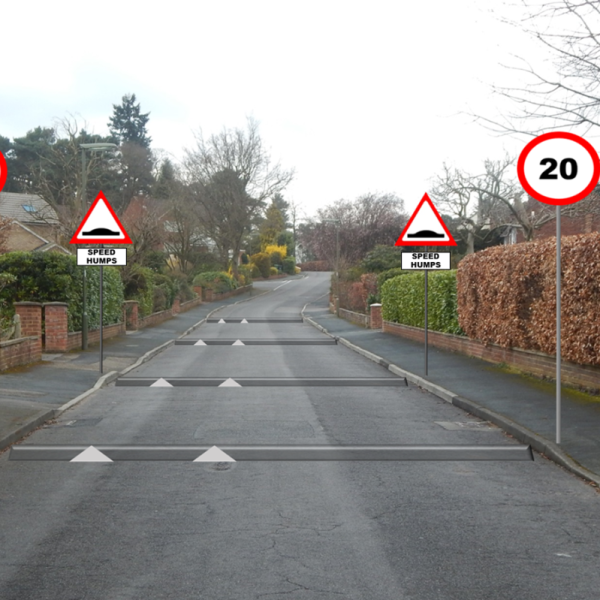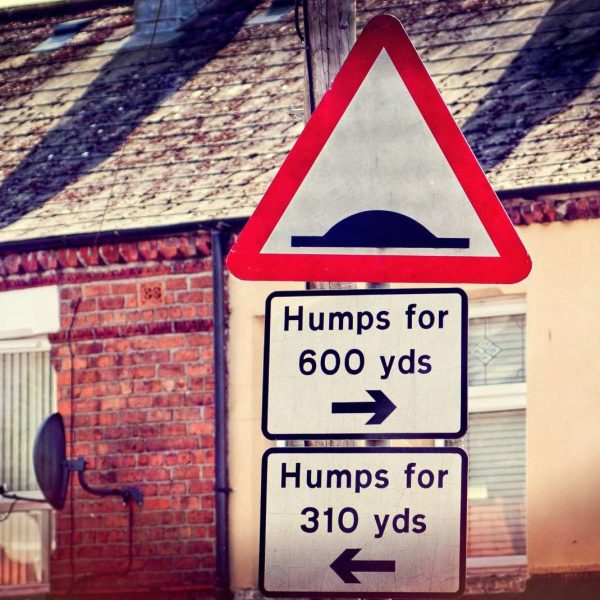
11 Traffic Calming Ideas for UK Roads: From Classic to Innovative
UK roads, like those in many other countries, face the challenge of ensuring safety and maintaining a smooth flow of traffic. Over the years, various traffic calming measures have been implemented to address these concerns.
In this article, we’ll explore ten traffic calming ideas for UK roads, including both classic approaches and innovative solutions that are gaining traction worldwide.
1. Speed Tables and Humps
Classic Approach (Already Used)
Speed tables and humps are common traffic calming measures in the UK. These raised sections of road force drivers to slow down, reducing the risk of accidents in residential areas and near schools. They are widely recognised and relatively cost-effective. Speed tables, which are broader than speed bumps, provide a gentler transition, ensuring that emergency vehicles can navigate them without significant delays. Moreover, these traffic calming features are designed with proper signage and markings to alert drivers in advance, enhancing their effectiveness.
2. Chicanes
Classic Approach (Already Used)
Chicanes are narrow sections of road that force drivers to zigzag through them, reducing their speed. They are often used on residential streets to discourage speeding. However, they can be challenging for larger vehicles to navigate. Chicanes are particularly effective in areas with frequent pedestrian crossings, as they encourage drivers to approach these crossings at lower speeds, enhancing pedestrian safety. The placement of chicanes is crucial to ensure that they don’t impede emergency service vehicles and public transport.
3. Roundabouts
Classic Approach (Already Used)
Roundabouts are a quintessential part of UK road design. They promote a continuous flow of traffic, reducing the need for full stops and preventing high-speed collisions at intersections. Mini-roundabouts are particularly effective in calming traffic in residential areas. In addition to their safety benefits, roundabouts often feature landscaping and central islands, making them aesthetically pleasing elements of urban design. Many modern roundabouts are designed with pedestrian crossings and cycling lanes, further enhancing their functionality and safety.
4. Road Diets
Classic Approach (Already Used)
Road diets involve reducing the number of lanes on a road to slow down traffic and create space for other uses like bike lanes or pedestrian walkways. This approach can improve safety and the overall livability of an area. Road diets have the added advantage of reducing noise pollution, making neighbourhoods quieter and more pleasant places to live. Additionally, they encourage active transportation modes like walking and cycling, contributing to improved public health and reduced congestion.
5. Speed Limit Reductions
Classic Approach (Already Used)
Reducing speed limits on specific roads or in designated areas is a straightforward way to calm traffic. Lower speed limits are often accompanied by increased enforcement to ensure compliance. Furthermore, lower speed limits help reduce the severity of accidents, making them crucial in areas with a high density of vulnerable road users, such as schools and residential neighbourhoods. Public awareness campaigns about the benefits of reduced speed limits and their impact on road safety can further support these measures.
6. Shared Spaces
Innovative Approach (Gaining Traction)
Shared spaces are areas where pedestrians, cyclists, and vehicles coexist with minimal or no traffic signs or signals. Instead, the design relies on eye contact and negotiation between road users. Such spaces encourage drivers to proceed with caution, prioritizing safety over speed. They are often accompanied by textured road surfaces and landscaping to create a distinctive tactile and visual environment. This tactile differentiation serves as a subtle reminder to drivers that they are in a shared space, and the absence of traditional road signs encourages them to be more aware of their surroundings and fellow road users.
7. Smart Traffic Signals
Innovative Approach (Gaining Traction)
Smart traffic signals use sensors and real-time data to optimise traffic flow. They can adjust signal timings based on traffic conditions, reducing congestion and the temptation to speed to make it through a green light. Some systems also incorporate pedestrian and cyclist detection for added safety. Moreover, these intelligent signals often feature countdown timers, allowing pedestrians and cyclists to know precisely how much time they have to cross the road safely. The integration of smart traffic signals with advanced traffic management systems offers a holistic approach to traffic calming by actively responding to real-time traffic dynamics.
8. Road Narrowing
Innovative Approach (Gaining Traction)
Road narrowing involves physically reducing the width of a road at strategic points. This forces drivers to slow down and be more cautious, especially when sharing the road with other vehicles or pedestrians. Such measures are particularly effective on narrow urban streets. Road narrowing can also incorporate traffic-calming elements like raised crossings and textured road surfaces, making it clear to drivers that they are entering an area with reduced speed limits. Additionally, road narrowing is often accompanied by enhanced signage and road markings to ensure that drivers are aware of the changing road conditions well in advance.
9. Speed-Activated Signs
Innovative Approach (Gaining Traction)
Speed-activated signs display a driver’s current speed and change dynamically based on their speed. When a driver exceeds the speed limit, the sign flashes or displays a warning message. These signs serve as effective reminders to slow down and comply with speed limits. Moreover, some speed-activated signs can collect data on vehicle speeds, providing valuable information for traffic planning and enforcement efforts. These signs are also often used in conjunction with traditional static speed limit signs, creating a dual-layered approach to speed regulation, which enhances their visibility and effectiveness.
10. Green Infrastructure
Innovative Approach (Gaining Traction)
Green infrastructure involves adding vegetation and landscaping elements to roadways. This not only beautifies the area but also provides a visual cue for drivers to reduce their speed. Planting trees, creating green buffers, and adding raised planters can enhance safety while improving the urban environment. Green infrastructure often complements other traffic calming measures, such as road narrowing and speed tables, by creating a more inviting and visually appealing streetscape. Additionally, the presence of greenery can have a calming effect on drivers, making them more inclined to drive at a reasonable speed and be mindful of their surroundings.
11. Variable Message Signs (VMS)
Innovative Approach (Gaining Traction)
Variable Message Signs (VMS) are electronic signs placed along roadways to display real-time information to drivers. While VMS have been traditionally used for traffic management and providing information about road conditions or incidents, they can also serve as effective tools for traffic calming.
These signs are equipped with technology that can detect vehicle speeds and provide instant feedback to drivers. When a driver approaches a VMS-equipped area at an excessive speed, the sign can display a customized message, such as “Slow Down” or “Speed Limit Enforced.” This real-time feedback can be more persuasive than static signs, as it directly addresses the behaviour of the driver in the moment.
VMS can be strategically placed in areas known for speeding issues, school zones, or residential neighbourhoods with high pedestrian activity. When drivers encounter these signs, they are not only reminded to adhere to speed limits but also alerted to the specific context, such as the presence of a school or a busy pedestrian crossing.
Moreover, VMS can be programmed to display variable speed limits based on traffic conditions. For example, during adverse weather conditions or heavy traffic, the speed limit displayed on the VMS can be temporarily reduced to ensure safer driving. This adaptive approach helps maintain a consistent and safe flow of traffic.
Furthermore, VMS can be integrated with traffic management systems to provide a holistic solution. When speeding is detected in a particular area, the VMS can trigger additional traffic calming measures, such as activating flashing beacons or adjusting signal timings at nearby intersections to create a smoother traffic flow.
In recent years, advancements in VMS technology have made them more versatile and cost-effective. They can be powered by solar panels, making them environmentally friendly and suitable for installation in various locations.
The effectiveness of VMS in traffic calming has been demonstrated in several studies. Drivers tend to be more responsive to dynamic messages displayed on electronic signs, especially when the messages are relevant to their immediate driving behaviour. This responsiveness can significantly contribute to reducing speeds and enhancing road safety.
In conclusion, Variable Message Signs (VMS) represent an innovative and adaptable approach to traffic calming. By providing real-time feedback and context-specific information to drivers, they contribute to safer roadways in areas prone to speeding and high-risk zones. When integrated with other traffic management measures, VMS can be a valuable tool in creating a comprehensive and effective traffic calming strategy for UK roads.
A concern in the UK
Traffic calming is an ongoing concern in the UK, and various measures, both classic and innovative, have been introduced to address it. While classic measures like speed tables, chicanes, and roundabouts continue to play a significant role in ensuring road safety, innovative approaches such as shared spaces, smart traffic signals, and green infrastructure are gaining traction.
The choice of traffic calming measures depends on factors like the road’s location, traffic volume, and specific safety concerns. A combination of these measures, tailored to the unique challenges of each road, can help create safer and more enjoyable roadways for all users. As technology and urban planning continue to evolve, the UK can look forward to even more effective and innovative solutions for calming its roads.
















